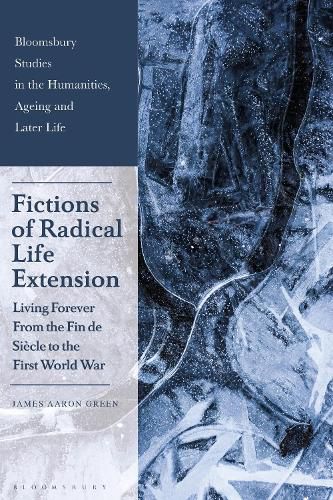Readings Newsletter
Become a Readings Member to make your shopping experience even easier.
Sign in or sign up for free!
You’re not far away from qualifying for FREE standard shipping within Australia
You’ve qualified for FREE standard shipping within Australia
The cart is loading…






In this major new study, James Aaron Green provides the first account of literary thought experiments published from 1878 to 1918 that speculate on the prospect of radically longer lives.
Green argues that these fictions helped negotiate the emergent experiences and meanings of age and aging during years when long-established norms were being eroded and supplanted. By recovering fictions by lesser-known writers and re-evaluating those by more familiar writers like H. G. Wells and J. M. Barrie, the study reveals the surprising abundance and formal diversity of such speculative accounts. Through readings supported by archival materials (anti-aging advertisements, medical treatises), these accounts are shown to have intervened on a wide range of scientific and social questions related to age and aging - from transfusion to colonialism, and second chances to apocalyptic demography.
Ultimately, Green's innovative historicist study proves how close attention to fictions of radical life extension can not only renovate our understanding of historical attitudes to age and aging, but also those of today.
$9.00 standard shipping within Australia
FREE standard shipping within Australia for orders over $100.00
Express & International shipping calculated at checkout
Stock availability can be subject to change without notice. We recommend calling the shop or contacting our online team to check availability of low stock items. Please see our Shopping Online page for more details.
In this major new study, James Aaron Green provides the first account of literary thought experiments published from 1878 to 1918 that speculate on the prospect of radically longer lives.
Green argues that these fictions helped negotiate the emergent experiences and meanings of age and aging during years when long-established norms were being eroded and supplanted. By recovering fictions by lesser-known writers and re-evaluating those by more familiar writers like H. G. Wells and J. M. Barrie, the study reveals the surprising abundance and formal diversity of such speculative accounts. Through readings supported by archival materials (anti-aging advertisements, medical treatises), these accounts are shown to have intervened on a wide range of scientific and social questions related to age and aging - from transfusion to colonialism, and second chances to apocalyptic demography.
Ultimately, Green's innovative historicist study proves how close attention to fictions of radical life extension can not only renovate our understanding of historical attitudes to age and aging, but also those of today.